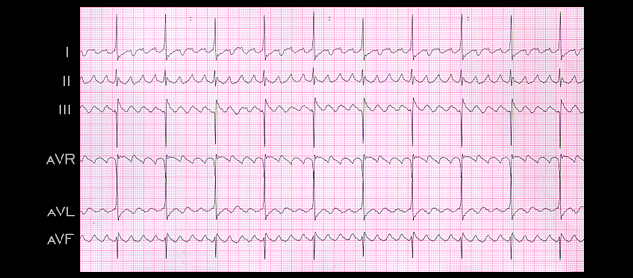
The use of drugs which slow conduction and/or increase AV nodal refractoriness such as the beta-adrenergic blocking agents, the calcium channel blocking agents and digitalis will also cause higher degrees of AV block and permit the easier recognition of the flutter waves. The ECG shown here is from a 35 year old woman who was being treated with diltiazem, a calcium channel blocking agent. The rhythm is atrial flutter with a flutter rate of 260 and a ventricular rate of 65, There is a consistent relationship between the flutter waves and the QRS complexes indicating the presence of 4:1 AV block. Note that the flutter waves appear to be upright in leads II, III and aVF and inverted in lead aVR. This indicates the less common form of type I flutter in which the impulse travels around the right atrial re-entry loop in a clockwise direction.
